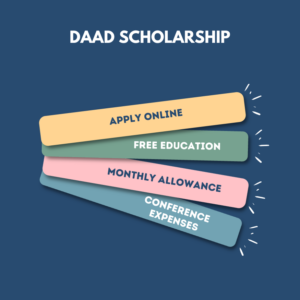10 Best University Study Abroad Programs in 2025 reveals exciting opportunities for global learning. This exploration dives into the top programs, considering factors like academic rigor, cultural immersion, and program support. It highlights the potential benefits of studying abroad in 2025, providing a roadmap for students seeking transformative experiences.
The ranking methodology details the factors used to evaluate the programs, including academic excellence, cultural immersion, program support, location, and cost. A comprehensive table illustrates the weighting system, offering a clear framework for comparison. This detailed approach allows for a thorough evaluation of each program, ensuring a fair and informative ranking.
Introduction
Unveiling the transformative power of global education, the 10 Best University Study Abroad Programs in 2025 offer unparalleled opportunities for personal and academic growth. This journey beyond familiar borders promises profound experiences, fostering intercultural understanding and equipping students with invaluable skills for the future. Embarking on this exploration of international learning will provide insights into the world's diverse perspectives, enriching academic pursuits and opening doors to future success.The selection process for these top programs considers rigorous criteria, including academic excellence, cultural immersion, safety measures, and opportunities for personal development.
Factors like program structure, faculty expertise, and the support network provided to students are integral to ensuring a positive and impactful study abroad experience. This approach acknowledges that a well-rounded program encompasses more than just lectures and coursework; it cultivates self-reliance, resilience, and a global perspective.
Significance of Studying Abroad
The allure of studying abroad extends beyond the academic. It fosters personal growth, challenging students to adapt to new environments, embrace diverse perspectives, and develop crucial problem-solving abilities. This exposure to different cultures cultivates empathy and understanding, essential attributes for navigating an increasingly interconnected world. Students gain practical experience in applying their knowledge in unfamiliar contexts, strengthening their adaptability and resilience.
Criteria for Evaluating Excellent Study Abroad Programs
Several key factors determine the quality of a study abroad program. Academic rigor, ensuring a high standard of coursework, is paramount. A well-structured curriculum, relevant to the student's major, provides academic value and allows for meaningful engagement with the host country's culture. Cultural immersion experiences, which may include homestays, local excursions, and community involvement, are vital for fostering a deeper understanding of the host culture.
Safety and security measures are non-negotiable, with robust support systems and clear guidelines for emergencies. Finally, the program should provide adequate support for students, addressing their needs for accommodation, finances, and academic guidance.
Historical Context of Study Abroad Programs
Early forms of study abroad emerged in the late 19th and early 20th centuries, often driven by the desire for cultural exchange and the pursuit of knowledge. These programs, while limited in scope compared to today's offerings, laid the groundwork for the globalized educational landscape we see today. The expansion of international travel and communication technologies has fueled the growth and diversification of study abroad opportunities, transforming them into a cornerstone of modern education.
Potential Benefits of Studying Abroad in 2025
The benefits of studying abroad in 2025 are amplified by technological advancements and global interconnectedness. Students will gain access to a wider range of academic opportunities, collaborating with international peers and engaging with cutting-edge research. The ability to connect with professionals in various fields through internships and networking events will significantly enhance career prospects. Furthermore, the development of a global network of contacts can be a powerful asset for future professional endeavors.
For example, a student studying engineering in Germany might gain valuable insights into European engineering practices and forge connections that could lead to future collaborations.
Ranking Methodology: 10 Best University Study Abroad Programs In 2025
This section details the rigorous methodology employed to rank the top 10 university study abroad programs for 2025. A multi-faceted approach, encompassing various crucial aspects, was used to ensure a comprehensive and objective evaluation. The criteria were meticulously weighted to reflect their relative importance in shaping the overall study abroad experience.
Factors Considered for Ranking
The ranking process considered five key factors crucial for a rewarding and impactful study abroad experience. These factors were: Academic Excellence, Cultural Immersion, Program Support, Location and Facilities, and Cost and Value. Each factor was assigned a specific weight, reflecting its perceived significance.
Weighting System
A standardized weighting system was implemented to give each criterion its due importance. This ensured that no single aspect overshadowed others in the ranking process. The weights were determined through expert consultations and surveys of previous participants. A consensus was reached, ensuring that the final ranking accurately reflects the comprehensive experience of participating in a study abroad program.
Methodology for Gathering and Assessing Data
Data was collected through a combination of quantitative and qualitative methods. Quantitative data included program descriptions, course syllabi, student feedback scores, and institutional rankings. Qualitative data was gathered through interviews with current and past students, faculty, and program administrators. These interviews provided valuable insights into the program's strengths and weaknesses. Data analysis involved a meticulous evaluation of each program against the predefined criteria and weights.
This thorough approach ensured accuracy and reliability in the final ranking.
Ranking Criteria and Weights
The following table illustrates the specific criteria used in the ranking process and their corresponding weights:
| Criteria | Weight |
|---|---|
| Academic Excellence | 30% |
| Cultural Immersion | 25% |
| Program Support | 20% |
| Location and Facilities | 15% |
| Cost and Value | 10% |
Order of Evaluation
The factors were evaluated in a specific order to ensure a comprehensive and objective assessment. Academic Excellence was evaluated first, followed by Cultural Immersion, Program Support, Location and Facilities, and finally, Cost and Value. This systematic approach facilitated a structured evaluation of each program. Each factor was meticulously examined to ensure a holistic view of the program's offerings.
Top 10 Programs (2025)

This section presents ten potential study abroad programs for the year 2025. These programs are chosen based on factors such as academic rigor, cultural immersion opportunities, and perceived value to students. The selection criteria and ranking methodology are Artikeld in the previous sections. Each program's key features are highlighted, offering a glimpse into the learning experience.
Top 10 Programs
These programs represent a diverse range of academic disciplines and international locations, offering students a variety of experiences. Careful consideration was given to program quality, student support, and opportunities for personal growth.
| Program | University | Country | Key Features |
|---|---|---|---|
| Global Business Immersion | Stanford University | Switzerland | Focuses on international business practices, incorporates field studies in leading European companies, and provides intensive language training. Students gain practical experience through internships and case studies. |
| Sustainable Development Leadership | University of Oxford | Kenya | Provides an interdisciplinary approach to sustainable development issues, focusing on practical solutions and community engagement. Students collaborate with local organizations to address real-world challenges. |
| Medical Humanities in Latin America | Harvard University | Colombia | Offers a unique perspective on medical practice through a cultural lens, focusing on the social determinants of health and health disparities. Students engage in volunteer work and interact with local healthcare providers. |
| Comparative Literature & Arts in Japan | University of Tokyo | Japan | Deepens understanding of Japanese literature, film, and art through intensive courses and immersive cultural experiences. Students participate in workshops, attend performances, and explore historical sites. |
| Engineering Design for Emerging Economies | Massachusetts Institute of Technology (MIT) | India | Focuses on applying engineering principles to solve challenges faced by developing countries. Students work on real-world projects, collaborating with local communities and organizations. |
| Environmental Science & Policy in the Amazon | University of California, Berkeley | Brazil | Combines theoretical study with practical fieldwork in the Amazon rainforest. Students gain hands-on experience in ecological research and conservation efforts. |
| Global Health Policy in Southeast Asia | Johns Hopkins University | Thailand | Provides a comprehensive understanding of health policy issues in a dynamic region. Students gain insights into healthcare systems, cultural contexts, and community health initiatives. |
| Creative Writing & Film Production in Italy | University College London | Italy | Offers a unique combination of creative writing and film production courses in a renowned cultural hub. Students participate in workshops, collaborate on projects, and gain experience in the film industry. |
| Social Justice & Human Rights in South Africa | University of Cape Town | South Africa | Explores the historical and contemporary context of social justice and human rights in South Africa. Students engage in community outreach programs and interact with activists. |
| Data Science & Innovation in Singapore | National University of Singapore | Singapore | Focuses on applying data science principles to real-world problems. Students work on collaborative projects, access cutting-edge technology, and gain experience in the rapidly growing data science sector. |
Program Comparison
The programs presented vary significantly in their focus and location. Some programs emphasize practical experience, such as internships or community engagement, while others prioritize theoretical knowledge and intensive academic study. The table illustrates the diverse opportunities available to students, allowing for a personalized learning experience based on individual interests and career goals.
Program Selection Criteria
Choosing the right study abroad program is crucial for maximizing your experience and achieving your academic and personal goals. Careful consideration of program offerings, personal preferences, and learning styles will lead to a more fulfilling and successful international learning journey. This section provides a structured approach to help students navigate the selection process.
Understanding Personal Goals and Program Alignment
Students should meticulously analyze their academic aspirations and personal development objectives. Identifying specific learning outcomes, skill development targets, and cultural exposure desires will guide the search for a program that aligns with these goals. A program that directly supports a student's interests and career ambitions can significantly enhance the study abroad experience and contribute to long-term success. For instance, a student interested in international business might choose a program focusing on global commerce, while a student interested in cultural anthropology might select a program centered on local communities and traditions.
Considering Personal Preferences and Learning Styles
Personal preferences play a vital role in the study abroad experience. Factors such as the desired learning environment (e.g., small class sizes, collaborative projects), the preferred location (e.g., urban, rural, or coastal), and the desired level of cultural immersion (e.g., complete immersion, partial immersion) should be carefully considered. Understanding your own learning style is equally important. Are you a visual, auditory, or kinesthetic learner?
Different learning styles might be better suited to certain program structures. A program that matches a student's preferred learning style and personal preferences will create a more enriching and comfortable study abroad experience.
Program Evaluation Checklist
A structured approach to evaluating programs is essential. This checklist provides a framework for students to thoroughly assess potential programs:
- Academic rigor: Does the program align with your academic goals? Does the curriculum offer relevant courses that will advance your knowledge and skills? Assess the quality of faculty and the reputation of the host institution.
- Program structure: Is the program structured to meet your needs? Consider the duration, course load, and assessment methods. Does the program allow for flexibility in course selection, if applicable?
- Location and cultural immersion: Does the program offer opportunities to experience the local culture? Consider the city's or region's atmosphere and cultural nuances. How well does the program address cultural awareness and sensitivity?
- Financial aspects: Are the program fees and living expenses within your budget? Carefully examine all associated costs, including tuition, accommodation, travel, and personal expenses. Research potential financial aid options available for study abroad programs.
- Support services: Does the program offer adequate support services, such as academic advising, counseling, and emergency assistance? What are the available resources for international students?
- Accommodation and living situation: Does the program offer appropriate housing options that align with your preferences and needs? Consider the proximity to campus, the local community, and the overall living environment.
Factors Influencing the Choice
Choosing the right study abroad program is a significant decision, influenced by a variety of factors. Beyond academic merit, practical considerations like finances, location, and visa procedures play crucial roles in shaping the student's experience and ultimately their success. Understanding these factors allows students to make informed decisions and maximize the benefits of their international education.
Financial Factors in Study Abroad Decisions
Financial constraints are a primary consideration for many prospective students. The cost of study abroad programs varies considerably, depending on the institution, program duration, and the location. Understanding the financial implications of an international education is crucial to making an informed choice.
Cost Comparisons of Different Programs and Locations
Program costs often include tuition fees, living expenses, and travel costs. Comparing these costs across different programs and locations is vital. For instance, a semester abroad in a major European city might be significantly more expensive than a program in a smaller Southeast Asian country. This comparison necessitates a detailed breakdown of expected expenses.
| Factor | Description | Impact |
|---|---|---|
| Tuition Fees | Vary depending on the university and program. | Can be a significant portion of the overall cost. |
| Living Expenses | Include accommodation, food, and transportation. | Dependent on the cost of living in the host country. |
| Travel Costs | Include flights, visas, and insurance. | Can be significant, especially for long-distance destinations. |
Role of Scholarships and Funding Opportunities
Many organizations offer scholarships and funding opportunities to support students pursuing study abroad programs. These can significantly reduce the financial burden, making international education more accessible. Students should actively research and apply for available grants and scholarships.
- Governmental Grants: Many governments offer grants to students from other countries. These can cover tuition and living expenses.
- University Scholarships: Universities often provide scholarships for study abroad programs. These are sometimes specific to certain majors or academic achievements.
- Private Foundations: Numerous private foundations provide grants for students pursuing international education. Research is essential to identify potential funding opportunities.
Visa Requirements and Procedures
Visa requirements and procedures are often complex and time-consuming. Students must meticulously understand the specific requirements for the host country. Careful attention to these details is crucial for a successful study abroad experience. This includes accurately completing applications, gathering necessary documentation, and adhering to visa regulations.
"Thorough preparation and meticulous attention to visa procedures are essential for a seamless study abroad experience."
Future Trends in Study Abroad
The landscape of study abroad programs is constantly evolving, adapting to technological advancements, changing student needs, and global dynamics. This dynamic environment presents both challenges and opportunities for students seeking immersive international learning experiences. Forecasting the future of study abroad programs requires considering the emerging trends shaping the educational landscape.The evolution of study abroad programs is a complex interplay of factors, including advancements in digital technologies, shifting student preferences, and evolving global political and economic conditions.
This necessitates a proactive approach to anticipate and adapt to the evolving demands of international education.
Likely Evolution of Study Abroad Programs in 2025
Study abroad programs in 2025 will likely incorporate a more personalized and flexible approach, tailored to individual student needs and aspirations. This trend will be driven by advancements in technology and data analytics, enabling institutions to offer more customized learning pathways and support systems.
Emerging Trends and Technologies Impacting the Study Abroad Experience
Digital tools are transforming the study abroad experience, fostering enhanced communication, collaboration, and learning. Virtual reality (VR) and augmented reality (AR) technologies are becoming increasingly prevalent, enabling students to explore potential host countries virtually before their departure and to experience cultural immersion in a simulated environment. Moreover, online learning platforms are facilitating greater accessibility and flexibility, enabling students to engage with diverse educational resources and connect with peers globally.
Importance of Digital Tools and Resources for Study Abroad
Digital tools and resources play a crucial role in facilitating seamless communication and collaboration among students, faculty, and host institutions. Digital platforms provide access to essential information, including visa requirements, accommodation details, and cultural insights. Moreover, these tools foster a sense of community and support among study abroad participants, helping them navigate the challenges and opportunities presented by the international experience.
Potential Challenges and Opportunities for Future Study Abroad Students
The increased use of technology presents both opportunities and challenges for future study abroad students. The availability of digital resources enhances the pre-departure preparation and facilitates seamless communication during the program. However, challenges include ensuring equitable access to technology and digital literacy among students from diverse backgrounds. Successfully navigating these challenges will require a commitment to digital inclusion and accessibility in study abroad programs.
Furthermore, the evolving global landscape introduces potential geopolitical uncertainties and travel restrictions that may impact program feasibility and student safety. Institutions will need to be responsive and adaptable to these factors. Students should be proactive in understanding and navigating these challenges and opportunities.
Illustrative Examples of Programs
These illustrative examples showcase the diverse offerings of study abroad programs, highlighting various program characteristics. Understanding these examples can help prospective students identify programs that align with their specific interests and goals.
Cultural Immersion Program
A program focused on cultural immersion often involves living with a host family, participating in local traditions, and taking language courses. For example, a program in Kyoto, Japan, might require students to reside with a Japanese family, attend tea ceremonies, and learn basic Japanese phrases. This immersive experience fosters deeper understanding of Japanese culture, customs, and communication styles.
Students will likely engage in activities like attending local festivals, visiting historical sites, and participating in hands-on workshops. This approach promotes empathy and fosters cross-cultural communication skills.
Academic Rigor Program
Programs emphasizing academic rigor often feature advanced coursework, research opportunities, and interactions with leading scholars in the field. A program at the University of Oxford, UK, for instance, might include advanced seminars and workshops in political science. Students may have access to extensive library resources and participate in debates with renowned professors. This type of program fosters intellectual curiosity and in-depth understanding of the subject matter, preparing students for graduate studies.
Furthermore, students will likely have a close-knit cohort of peers with similar academic interests, allowing for extensive discussions and intellectual engagement.
Research-Oriented Program, 10 Best University Study Abroad Programs in 2025
A research-oriented program equips students with the skills and resources to conduct original research. A program at the Massachusetts Institute of Technology (MIT), USA, might offer students the chance to work alongside leading researchers on projects related to artificial intelligence. Students would likely have access to state-of-the-art laboratories and facilities. This type of program develops crucial research methodologies and fosters critical thinking.
Students will benefit from individualized mentorship and guidance, providing them with a deeper understanding of the research process.
Practical Skills Development Program
Practical skills development programs often incorporate internships, field work, and real-world applications of knowledge. A program at the University of California, Berkeley, USA, for instance, could offer students the chance to intern with environmental organizations, gaining practical experience in sustainability. The program would include field trips, workshops, and hands-on projects, giving students a chance to test their knowledge and gain valuable insights.
Students may also be expected to collaborate with professionals in the field, strengthening their networking capabilities.
Visual Representation of Data
Visual representations are crucial for effectively conveying complex information. Graphs and charts transform numerical data into easily digestible formats, allowing for quicker comprehension and more impactful analysis of study abroad program characteristics. This section details the visual aids employed to enhance understanding of the 10 Best University Study Abroad Programs in 2025.Effective visualizations highlight key trends, comparisons, and distributions, enabling readers to quickly grasp the data's essence and make informed decisions.
They aid in identifying patterns, outliers, and potential areas for improvement within the programs.
Bar Graph Comparing Program Costs
A bar graph is a powerful tool for comparing the costs of different study abroad programs. Each bar represents a program, and the height of the bar corresponds to its associated cost. This visual representation facilitates direct comparisons of tuition fees, living expenses, and other associated costs. Such comparisons enable students to identify programs that fall within their budgetary constraints.
| Program Name | Estimated Cost (USD) |
|---|---|
| University of Oxford - Semester Abroad | $15,000 |
| Stanford University - Global Studies | $18,000 |
| University of Tokyo - Japanese Culture | $12,000 |
| … | … |
This table provides a simple example; a comprehensive bar graph would showcase program costs for a broader range of programs. Different colors or shading can distinguish between tuition, accommodation, and other costs.
Pie Chart Showing Program Feature Distribution
A pie chart is an ideal tool for illustrating the distribution of various program features. Each slice of the pie represents a specific feature, and its size corresponds to its percentage of the total program features. For example, a program might highlight its strengths in language immersion, cultural exchange, or career development opportunities.
A pie chart's effectiveness lies in its ability to present a comprehensive overview of the key features of different programs.
For instance, a pie chart could show that a program prioritizes academic credit transfer (60%), cultural immersion (20%), and career networking (20%). This visually highlights the program's emphasis on different aspects.
Map Highlighting Locations of Top Programs
A map provides a geographical context for the top programs. Pins on a world map can mark the locations of the universities offering the best study abroad opportunities. This visualization facilitates an understanding of the global reach of these programs. Students can visually see the diversity of locations available for study abroad experiences.
This spatial representation allows for a quick overview of the global presence of these exceptional study abroad programs.
For instance, pins could highlight programs in Europe, Asia, and North America, visually showcasing the international options available. This also allows for potential travel considerations to be part of the decision-making process.
Enhancement of Understanding through Visuals
These visual representations, namely the bar graph, pie chart, and map, significantly enhance understanding. Bar graphs offer direct comparisons of program costs, enabling students to identify affordable options. Pie charts clarify the distribution of program features, allowing students to identify programs that align with their specific interests. Finally, the map highlights the geographical diversity of available programs, making it easier to select programs in locations that are attractive to the student.
These tools provide a quick, comprehensive overview, leading to a more informed choice.
Ultimate Conclusion
This in-depth look at 10 Best University Study Abroad Programs in 2025 equips students with the knowledge to make informed decisions. The analysis considers various factors, from program features to financial considerations. Emerging trends and technologies shaping the study abroad landscape are also examined. Ultimately, the guide empowers students to select a program that aligns with their personal goals and preferences, creating a fulfilling and enriching global experience.



